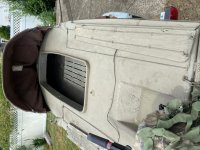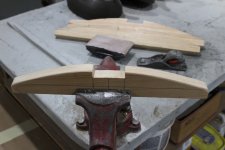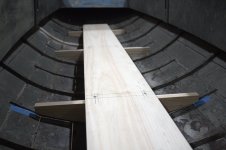David K
Member
Recently purchased this 1982 Aeromarine from the original owner. The boat has not been hunted in several years and he said that one of his friends did modifications to the cockpit. Luckily it came with a title and registration for both the boat and trailer. Trailer lights even worked when I picked it up! I have just started work on it and would love input from this board.
Most of the hardware had seen better days, so I stripped it all off of the boat, including the makeshift flapper boards, and gave the topside a good sanding.
I removed the inspection ports for the bow and stern and found both to be foam filled with the foam in good condition. Thinking about installing plastic inspection hatches over these.
The wood lattice/floor was pretty heavy and rotten, so I chucked that. Will have to figure out an alternative.
Started opening the cockpit back up to its original form. Taking my time doing it and encountering some rusted and some stainless screws along the way.
Purchased Parker duck boat primer and paint for the top side and gator glide for the bottom.
Boat came with a Mercury 2 stroke 15 hp that should move it well.
My work bench is a disaster... time to clean it off and get to work.





Most of the hardware had seen better days, so I stripped it all off of the boat, including the makeshift flapper boards, and gave the topside a good sanding.
I removed the inspection ports for the bow and stern and found both to be foam filled with the foam in good condition. Thinking about installing plastic inspection hatches over these.
The wood lattice/floor was pretty heavy and rotten, so I chucked that. Will have to figure out an alternative.
Started opening the cockpit back up to its original form. Taking my time doing it and encountering some rusted and some stainless screws along the way.
Purchased Parker duck boat primer and paint for the top side and gator glide for the bottom.
Boat came with a Mercury 2 stroke 15 hp that should move it well.
My work bench is a disaster... time to clean it off and get to work.
































